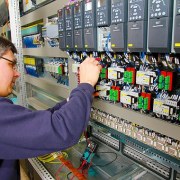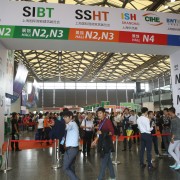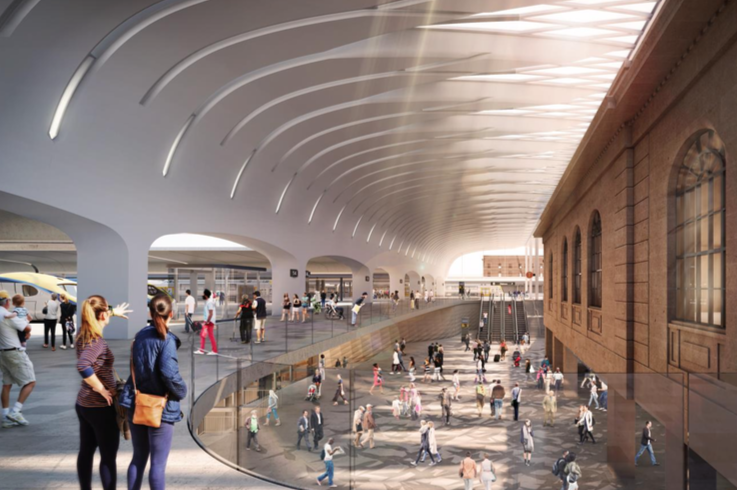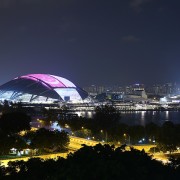Changing the Façade of Smart Buildings
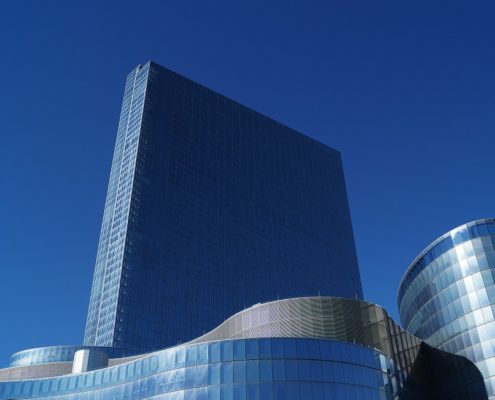 Technological evolutions are blurring the lines between physical and digital with the introduction of the Internet-of-Things (IoT). With the number of IoT devices growing exponentially to an estimated 75.4 billion devices in 20251, building fixtures such as lights, air-conditioning, alarm systems and door locks can all be a part of a hyper-connective virtual mesh.
Technological evolutions are blurring the lines between physical and digital with the introduction of the Internet-of-Things (IoT). With the number of IoT devices growing exponentially to an estimated 75.4 billion devices in 20251, building fixtures such as lights, air-conditioning, alarm systems and door locks can all be a part of a hyper-connective virtual mesh.
The integration of IoT in buildings bring about many benefits, transforming traditional architectures to smart buildings. As digitization continues to sweep across industries, buildings are also seeing rapid transformation in its form, construction and management. These enhancements stemmed from one need – to make buildings more efficient, safer and aesthetically balanced for improved quality of life.
With the global smart building market expected to grow from $5.73 billion in 2016 to $24.73 billion by 20212, there is indeed a huge potential for smart building solutions out there. Below are some of the examples of how the technology is shaping building and construction today, which will be showcased at Build Eco Xpo (BEX) Asia and Mostra Convegno Expocomfort Asia (MCE) taking place in Singapore in September.
Improved Operational Efficiency
Studies have shown that by digitising processes, companies reported an 82 percent increase in efficiency3. The same applies for building management, with the ecosystem of connected devices and sensors aggregating collected data to enable conservation of resources, better management of overhead and optimising operational efficiencies.
IoT connects a network of sensors and systems, allowing construction management to understand the efficiency of their workflow and making adjustments to improve productivity based on the data collected. IoT connectivity provides integrated systems with clear overview of information and control over resource management in real-time so any improvements can be realised almost immediately.
Companies like Crestron provide such technologies, allowing tenants and building owners to improve efficiency in resource management. Their proprietary system, Crestron FusionTM, allows tracking of energy usage through collection of data. Sensors monitor real-time and historical data and help to remotely control and schedule the usage of lightings and facilities in buildings for optimum energy efficiency.
Resource management, such as powering down lights when the systems detect zero activities, or adjusting cooling systems based on building temperature can now be automatically adjusted. This not only ensures resources are more efficiently utilised but also bring about an improved experience for the building users.
Energy Savings
Smart buildings monitor efficient energy usage through data collection and intelligent design. En-trak, a Hong Kong-based energy management solutions provider, uses IoT-enabled sensors and lighting, such as En-trak Energy and En-trakTM Smart Lighting to regulate energy usage and control lighting
For example, the company deployed En-trak Energy at Hong Kong’s English Schools Foundation’s (ESF) 22 institutions with sensors and meters to monitor and record energy consumption through a centralised system in real-time. With automation of resource and energy usage, ESF saved over HKD$1.1million in energy bills, 760,000 kWh of energy as well as reduced carbon emissions by over 600 tonnes within the first 10 months.
Energy savings can also be achieved through minimising external conditions that affect the use of the building’s resources. For example, research has shown that solar radiation through building windows account for approximately 40 percent of a building’s load on cooling systems. Smart tinting systems such as AGC -Kinestral’s Halio respond to external environment by adjusting its window tint automatically to deflect solar radiation. With internal building environments less affected by external factors, tenants can reduce up to 40 percent of energy usage in cooling systems and lighting.
Improving Experience of Tenants and Property Owners
Smart buildings provide convenience and automation to its tenants, akin to that of driverless cars. Lumani, a Singapore-based start-up developing next generation smart solutions for buildings is one fine example. LumaZones, the company’s open IoT system, makes use of sensors for autonomous operations of energy management.
By measuring occupancy level, it is able to adjust air temperature and lighting for a specified zone in the building, allowing for a tailored experience for users without any manual intervention. Engaging this system, a 1000-square-metre co-space office in Taipei has seen a 75 percent savings in energy usage for its lighting system.
Iot Technologies is the Way Forward for Property Owners
IoT is transforming every facet of the building and construction industry – from how it is built to how we can conserve resources and how the experience of users in the building can be enhanced. Although capital costs for green buildings seem to be higher than traditional ones, the life-cycle costs have been proven to be a lot lower, with payback happening a lot faster.
With data as the new lifeblood of every ecosystem, the industry can look forward to advanced sensors powering each stage of a building’s evolution, from design and construction to actual building management. The rapid innovation in the industry is proof that smart buildings will soon dominate skylines across the region.


